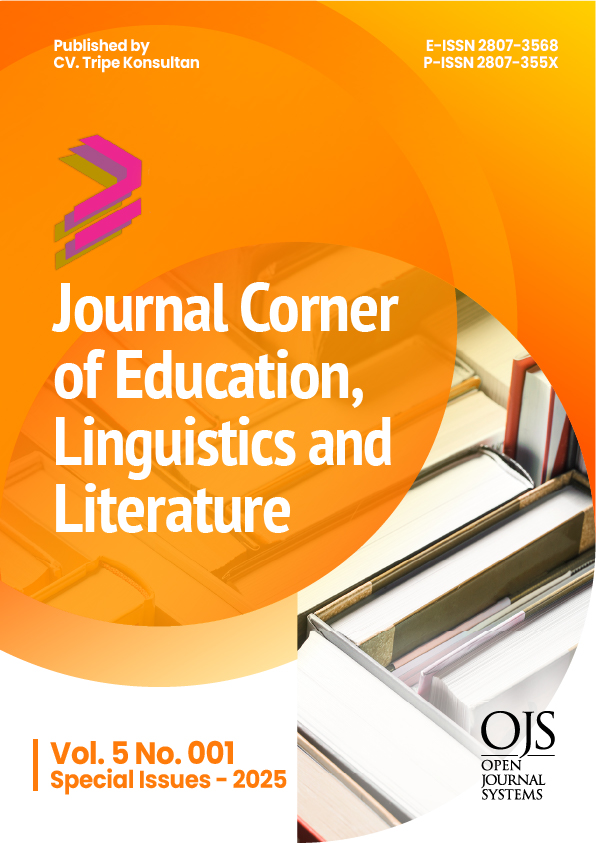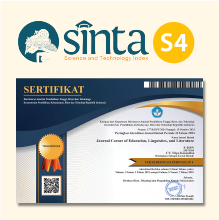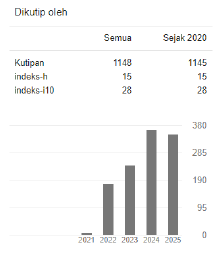An Analysis of Grammatical Errors Recount Text Written by Malahayati University Students
 https://doi.org/10.54012/jcell.v5i001.576
https://doi.org/10.54012/jcell.v5i001.576
 Abstract views: 49
Abstract views: 49
 PDF downloads: 49
PDF downloads: 49
Keywords:
Grammatical Errors, Recount Texts, Methods of AnalysisAbstract
This study examined grammatical errors in recount texts written by 20 Management students at Malahayati University. Using a qualitative descriptive approach, the analysis focused on vocabulary, mechanics, organization, grammar, and content. The results showed that while some students demonstrated good writing ability, many struggled, particularly with grammar and mechanics. Weaknesses were evident in verb tense usage, subject–verb agreement, and sentence structure, as well as in punctuation and capitalization. Differences in vocabulary and organization scores indicated varying levels of skill in word choice and text structuring. The findings highlight the need for targeted instructional strategies, especially grammar-focused lessons, explicit training in mechanics, and individualized support for vocabulary building and organizational skills. Identifying recurring error patterns allows for more effective teaching interventions aimed at improving students’ proficiency in recount writing.
Downloads
References
Brown, H. D. (2007). Principles of language learning and teaching. Pearson Education ESL.
Canale, M., & Swain, M. (1980). Theoretical bases of communicative approaches to second language teaching and testing. Applied Linguistics, 1(1), 1–47.
Celce-Murcia, M., & Olshtain, E. (2000). Discourse and language education. Cambridge University Press.
Chomsky, N. (1965). Aspects of the theory of syntax. MIT Press.
Corder, S. P. (1967). The significance of learners' errors. IRAL-International Review of Applied Linguistics, 5(4), 161–170.
Derewianka, B. (1990). Exploring how texts work. Primary English Teaching Association.
Ellis, R. (1994). The study of second language acquisition. Oxford University Press.
Ferris, D. R. (2002). Treatment of error in second language student writing. University of Michigan Press.
Grabe, W. (2001). Reading-writing relations: Theoretical perspectives and instructional practices. TESOL Quarterly, 35(1), 119–148.
Halliday, M. A. K., & Hasan, R. (1989). Language, context, and text: Aspects of language in a social-semiotic perspective. Oxford University Press.
Hyland, K. (2003). Second language writing. Cambridge University Press.
Hyland, K. (2004). Second language writing. Cambridge University Press.
Larsen-Freeman, D., & Long, M. H. (1991). An introduction to second language acquisition research. Longman.
Nation, I. S. P. (2009). Teaching ESL/EFL reading and writing. Routledge.
Raimes, A. (1983). Techniques in teaching writing. Oxford University Press.
Swain, M. (1985). Communicative competence: Some roles of comprehensible input and comprehensible output in its development. In S. Gass & C. Madden (Eds.), Input in second language acquisition (pp. 235–253). Newbury House.
Tribble, C. (1996). Writing. Oxford University Press
Downloads
Published
How to Cite
Issue
Section
License
Copyright (c) 2025 Hamida Nur Rahmawati, Desy Awal Mar’an

This work is licensed under a Creative Commons Attribution-ShareAlike 4.0 International License.
All articles published in the Journal Corner of Education, Linguistics, and Literature are licensed under the Creative Commons Attribution-ShareAlike License (CC BY-SA).

















